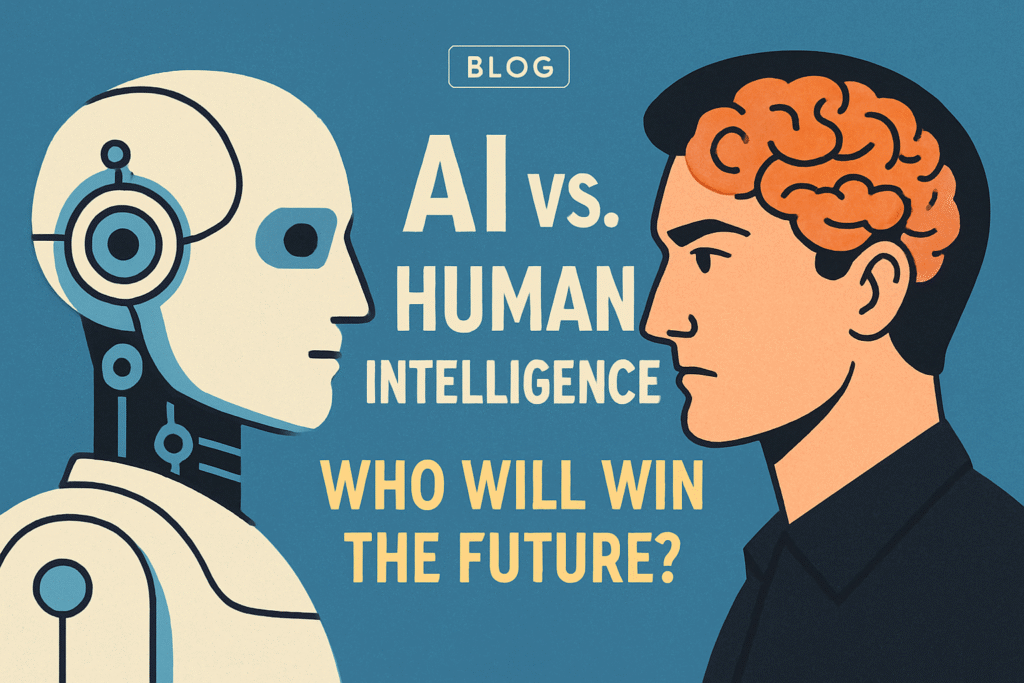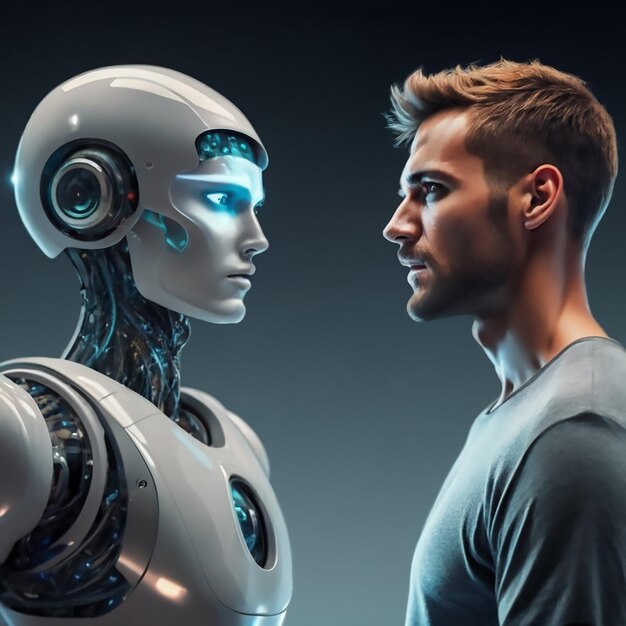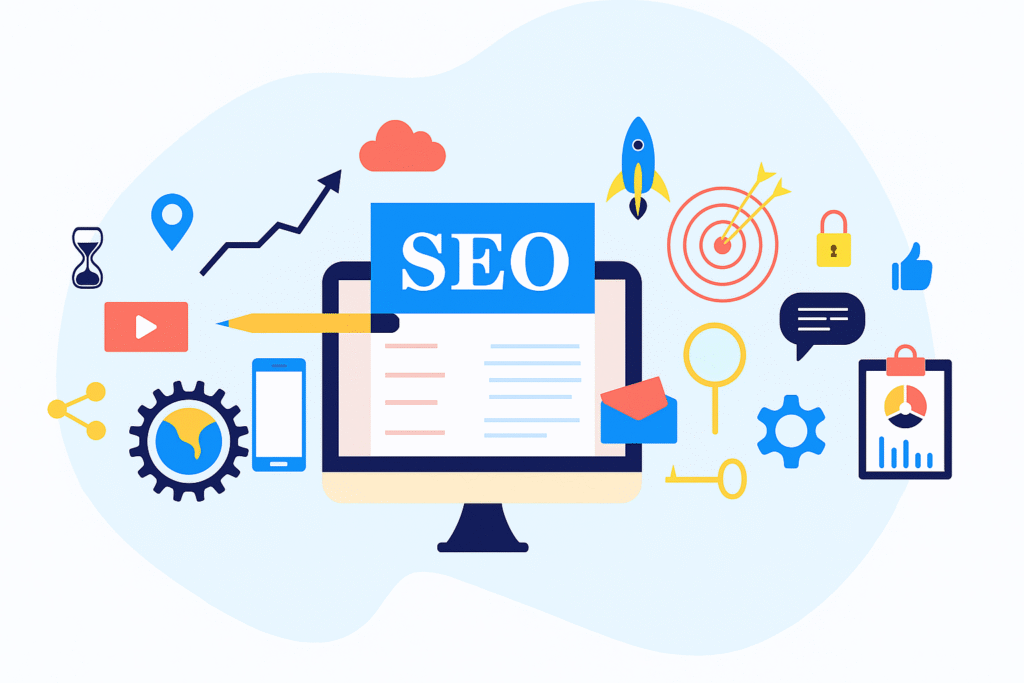
Ever wondered if your smartphone is secretly judging your music taste? It might be soon. The race between AI and human intelligence isn’t just sci-fi anymore—it’s happening in our pockets, homes, and workplaces right now.
I’m going to cut through the hype and show you exactly where humans still crush machines (yes, there are places), and where AI is legitimately leaving us in the dust.
The artificial intelligence revolution isn’t waiting for permission to transform everything from how doctors diagnose diseases to how you get job recommendations on LinkedIn.
But here’s what keeps me up at night: are we creating tools that will enhance human potential, or are we engineering our own obsolescence? The answer might surprise you.
Understanding AI and Human Intelligence
Defining artificial intelligence in today’s context
AI isn’t what sci-fi movies promised us. No killer robots or machines plotting our demise. Not yet, anyway.
Today’s AI is basically sophisticated pattern recognition. It’s algorithms that crunch massive amounts of data to find connections humans might miss. Think of ChatGPT writing essays, DALL-E creating art, or Tesla’s cars navigating traffic.
What we call “artificial intelligence” today is actually narrow AI – systems designed for specific tasks. They’re incredible at their jobs but clueless about everything else. A chess AI that can crush grandmasters would be completely stumped if you asked it to recognize a cat.
The unique aspects of human intelligence
Humans are messy thinkers, and that’s our superpower.
We make intuitive leaps. We connect seemingly unrelated ideas. We dream, imagine, and create in ways machines can’t replicate.
Human intelligence emerges from our lived experiences. We learn through physical sensations, social interactions, and emotional connections. Our thinking is embodied – inseparable from our physical existence.
Most importantly, we question “why.” We seek meaning, not just patterns. We’re driven by curiosity, creativity, and sometimes pure stubbornness to explore beyond what’s known.
Key differences in processing capabilities
| AI | Humans |
|---|---|
| Processes billions of calculations per second | Slow at computation but quick at intuition |
| Excels at narrow, defined tasks | Adaptable across countless domains |
| Never forgets data (unless deleted) | Forgets details but remembers concepts |
| No fatigue or attention limits | Needs rest and loses focus |
| Literal interpretation of inputs | Understands context, subtext, and nuance |
Machines crush us at speed and precision. We demolish them at adaptation and creativity.
Emotional intelligence: Can AI truly replicate it?
The short answer? Not really.
AI can recognize emotions from facial expressions, voice tones, and text. It can even simulate appropriate emotional responses. But there’s a fundamental difference between recognizing a pattern and genuinely feeling anything.
Emotions aren’t just data points – they’re lived experiences. They’re physical sensations, chemical reactions, and neural pathways shaped by our unique histories.
An AI might tell you it’s “sad” about something, but it hasn’t felt the heaviness in its chest, the lump in its throat, or the sting of tears. It’s mimicking, not experiencing.

This limitation matters. Emotional intelligence drives our deepest connections, our moral reasoning, and our most meaningful decisions. Without it, AI remains a sophisticated tool, not a true intelligence.
The Current State of AI Development
Breakthrough technologies shaping modern AI
AI is evolving at breakneck speed. Just five years ago, chatbots were clunky and image generators produced nightmare fuel. Now? They’re eerily competent.
The game-changers driving this revolution are pretty clear:
- Deep learning networks that mimic brain structures, allowing AI to recognize patterns humans might miss
- Transformer models powering systems like GPT-4 that can generate human-like text and follow complex instructions
- Diffusion models creating images that are increasingly indistinguishable from photographs
These technologies aren’t just academic toys. They’re analyzing medical scans with doctor-level accuracy and designing protein structures that human scientists couldn’t imagine.
Limitations that still constrain artificial intelligence
For all its impressive tricks, AI still hits some embarrassing walls.
The biggest issue? AI doesn’t truly understand anything. It’s pattern matching on steroids, not genuine comprehension. Ask ChatGPT to explain a joke it just made, and you’ll quickly see the limits.
AI also struggles with:
- Common sense reasoning that any 5-year-old can handle
- Adapting to novel situations without massive retraining
- Understanding cause and effect relationships
- Explaining its own decisions in meaningful ways
Plus, AI systems remain data-hungry monsters, requiring enormous computing resources that make them environmental nightmares.
How humans still outperform AI in creative and adaptive thinking
AI can generate an infinite stream of content, but humans still hold the creative crown.
We excel at intuitive leaps that connect seemingly unrelated concepts. When Picasso blended African masks with European portraiture, he wasn’t following a statistical pattern—he was creating something genuinely new.
Humans also dominate in:
- Emotional intelligence and reading social cues
- Working with limited, ambiguous information
- Adapting skills across radically different domains
- Moral reasoning and ethical judgment
Most importantly, we understand our own consciousness. AI mimics intelligence without experiencing it—a fundamental difference that may never be bridged.
Ethical and Existential Considerations
The control problem: Ensuring AI safety
The smarter AI gets, the harder it is to control. Think about it – we’re creating something potentially more intelligent than ourselves, then hoping we can keep it in check. That’s like expecting a toddler to supervise a rocket scientist.
The “control problem” isn’t just sci-fi nonsense. AI systems already make decisions we can’t fully explain. Their neural networks become black boxes even to their creators.
When Facebook’s algorithm started promoting divisive content, nobody planned that. It just optimized for engagement, exactly as instructed. The system did what we told it to do, not what we wanted it to do.

And that’s just today’s narrow AI. With general AI, the stakes skyrocket. How do you ensure a superintelligent system’s goals align with human values? Values we humans don’t even agree on ourselves?
Job displacement and economic inequality
AI isn’t coming for your job – it’s already here, scanning resumes, approving loans, and writing code.
Unlike previous technological revolutions, AI targets cognitive work too. Lawyers, doctors, analysts – no white-collar job is completely safe. And this time, the pace of change outstrips our ability to retrain.
The economic impacts are stark:
| Winners | Losers |
|---|---|
| AI companies | Displaced workers |
| Shareholders | Communities dependent on traditional jobs |
| Highly-skilled tech workers | Middle-skill workers |
The gap between tech haves and have-nots widens daily. Companies replace $50/hour professionals with $0.10/hour algorithms, but those savings rarely reach consumers or workers.
Privacy concerns in an AI-driven world
Your phone knows where you sleep, what you eat, who you talk to. Your smart speaker listens to your arguments. Your fitness tracker monitors your heartbeat.
All this data feeds the AI beast.
Companies don’t just know what you’ve done – they predict what you’ll do next. Predictive policing algorithms determine which neighborhoods get patrolled. Credit scoring systems decide who gets loans.
The uncomfortable truth? We’re trading privacy for convenience without reading the fine print.
Each small privacy concession seems harmless. But collectively, they create a surveillance infrastructure that totalitarian regimes of the past could only dream about.
Maintaining human autonomy and dignity
Recommendation algorithms already shape what we see, who we date, and what we believe. As AI systems become more persuasive, the line between helpful suggestion and manipulation blurs.
When Netflix knows what you’ll enjoy better than you do, or when Spotify’s algorithm understands your musical taste better than your friends, something fundamental shifts in human experience.
The risk isn’t just losing jobs – it’s losing purpose. What happens when AI can create better art, music, and stories than humans? When algorithms make better medical, financial, and even ethical decisions?
We must decide: will AI augment humanity, or replace what makes us human? The answer depends not on the technology itself, but on the choices we make now about how to develop and deploy it.

Preparing for an AI-Integrated Future

Essential human skills that will remain valuable
AI’s getting smarter by the day, but certain human abilities just can’t be coded. Creativity, emotional intelligence, and ethical judgment? Those are our superpowers.
Think about it. When was the last time an algorithm made you feel truly understood? Or came up with a wildly original idea that made you see the world differently?
Critical thinking and complex problem-solving will always need the human touch. Sure, AI can crunch numbers and spot patterns, but connecting dots across seemingly unrelated fields? That’s all us.
The most valuable skills going forward:
- Adaptability and continuous learning
- Ethical reasoning and moral decision-making
- Creative thinking and innovation
- Interpersonal communication and empathy
- Systems thinking and interdisciplinary collaboration
Educational shifts needed for the AI era
Our education system was built for an industrial age. Now it needs a serious upgrade.
Schools must stop focusing on memorization (AI already beats us there) and double down on what makes us uniquely human. Kids don’t need to memorize state capitals when they can just ask their phones.
The classroom of tomorrow needs to teach:
- How to work alongside AI tools effectively
- Data literacy and algorithmic thinking
- Creative problem-solving and innovation
- Ethical reasoning and responsible tech use
- Emotional intelligence and human connection
Universities are already playing catch-up, but K-12 education needs radical reimagining. The countries that figure this out first will have a massive competitive advantage.
Policy and governance frameworks for responsible AI
The AI race is heating up, but without guardrails, we’re heading for trouble.
Smart governance means finding the sweet spot between innovation and protection. Too much regulation stifles progress; too little creates tech monopolies and amplifies societal harms.
We need frameworks that:
- Mandate transparency in AI systems
- Establish clear liability for AI decisions
- Protect human autonomy and decision-making
- Address algorithmic bias and discrimination
- Ensure equitable access to AI benefits
The EU’s AI Act is a start, but global cooperation is essential. This isn’t just about technology—it’s about preserving human dignity and agency in an increasingly automated world.
Companies, governments, and citizens all have skin in this game. The policies we create today will determine whether AI becomes our greatest ally or our biggest regret.

The dynamic relationship between artificial intelligence and human intelligence continues to evolve at a remarkable pace. While AI has already surpassed human capabilities in computational tasks, data processing, and certain specialized applications, human intelligence retains its supremacy in creativity, emotional understanding, and ethical reasoning. Rather than a competition, the future points toward collaboration – leveraging AI’s computational power alongside human intuition and wisdom.
As we prepare for an AI-integrated future, the focus must shift toward developing ethical frameworks, addressing existential concerns, and creating educational systems that empower humans to work alongside increasingly sophisticated AI systems. The question isn’t whether AI or humans will “win” the future – it’s how we can partner with our technological creations to solve humanity’s greatest challenges while preserving what makes us uniquely human. The most promising path forward lies not in competition but in cooperation between artificial and human intelligence.

